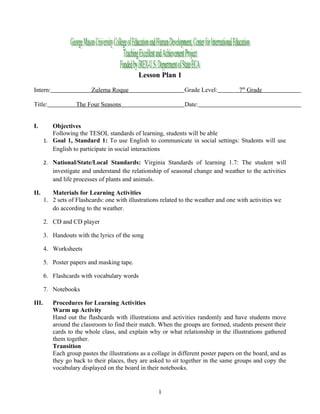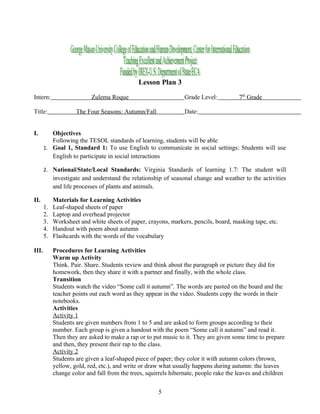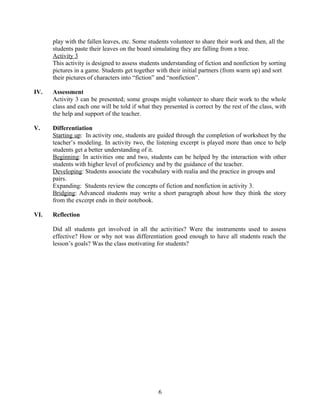This lesson plan outlines a lesson on the four seasons, focusing on autumn/fall. The objectives are for students to communicate in English about seasonal changes and understand how seasons impact plants and animals. Materials include leaves, a laptop, worksheets, a poem, and vocabulary flashcards. Procedures include a warm-up where students review past work, watching a video on autumn, and completing worksheets. Students will be assessed by sharing what they learned. Differentiation strategies support students at different levels, such as modeling, interaction, and relating concepts to personal experiences. The teacher reflects on student performance and lesson design.









